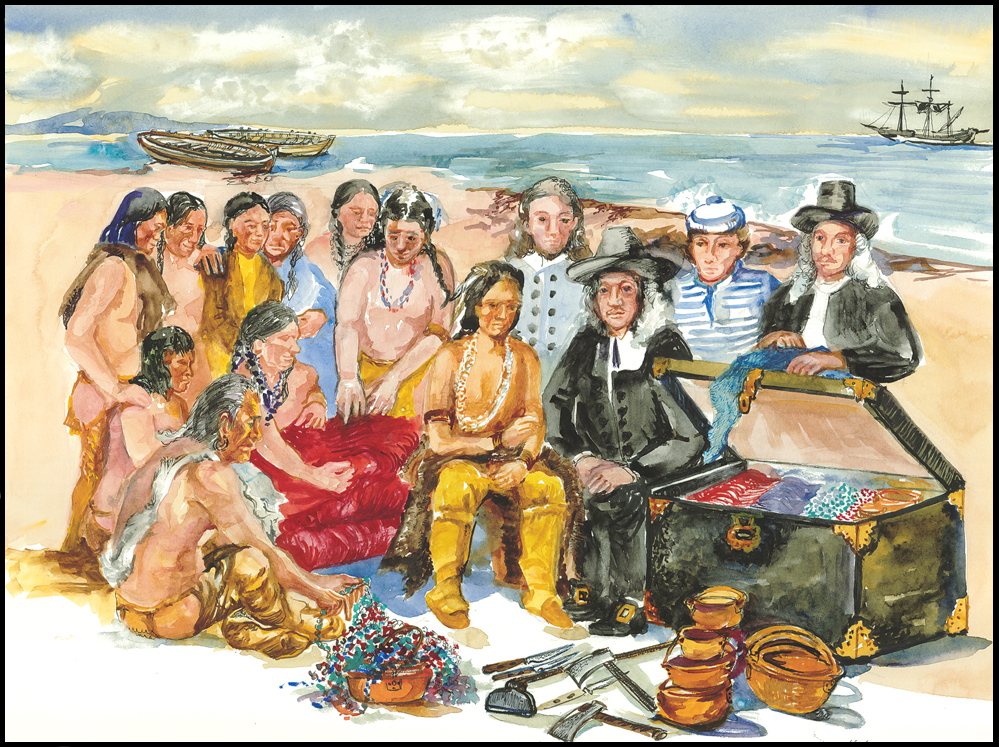Early Settlement Archaeology
The discovery of European goods in archaeological digs indicates that trade with Native Americans began as early as 1550. The earliest recorded contact between Europeans and the Native Americans of Pennsylvania occurred in 1608, when Captain John Smith sailed into the Chesapeake Bay to the mouth of the Susquehanna River and met the Susquehannocks. However, the Susquehannocks already possessed iron hatchets, copper kettles, and glass beads that they had obtained by trading furs with the French, Dutch, and Swedes. For much of the 17thcentury, the Delaware and Susquehanna River valleys were regions of competition among the Dutch, Swedes, and English for domination of trade with Native Americans. By the 1730s, explorers and traders ventured into the Ohio River Valley following Native American pathways through dense forests.
William Penn arrived in the New World in 1682 and established his colony as a haven for Quakers who were persecuted in England. Penn laid out his plans for the new colony in a document called Conditions and Concessions, which determined the state-of-affairs for land distribution and relations between Native Americans and Europeans. He decreed that "the Indians shall have the liberty to do all of the things... that any of the planters shall enjoy." By the 1700s, the city of Philadelphia was the focal point of the new colony and boasted a population of 5,000. It also served as a port of entry for immigrants to the United States and as a center of commerce. Though Philadelphia grew rapidly with the influence of new settlers, excavations for the late 20th-century construction of the Constitution Center in central Philadelphia by the National Park Service documented that the area was familiar to and used by Native Americans for thousands of years.
Colonial settlement expanded outward from Philadelphia and typically followed waterways. Most of the early colonists were farmers, their settlement widely dispersed. A network of roads expanded in the early 1700s as settlement spread farther into interior lands. Inns and taverns were established along the roads to provide services for the migratory population. Archaeological sites related to the movement of early settlers to areas outside of Philadelphia frequently consist of inns and taverns that were adjacent to well-traveled roadways. A quintessential example is the King of Prussia Inn that was established in 1769. Listed on the National Register of Historic Places, the stone building was moved by the Pennsylvania Department of Transportation to a nearby lot in August 2000. Prior to its removal, PennDOT conducted extensive archaeological excavations in surrounding yards and around its foundations. Archaeological investigations at the inn revealed two soil layers with artifacts dating from the 1770s. Uncovered artifacts reveal both private and commercial life. Such artifacts include glass, plates, and other tableware, as well as bones from kitchen refuse. The tableware included pieces imported from England as well as locally made items. Evidence of farming activity dating to the 18th century was also uncovered.
Early settlement archaeology is supplemented by excavations at key urban locales in the Commonwealth.
